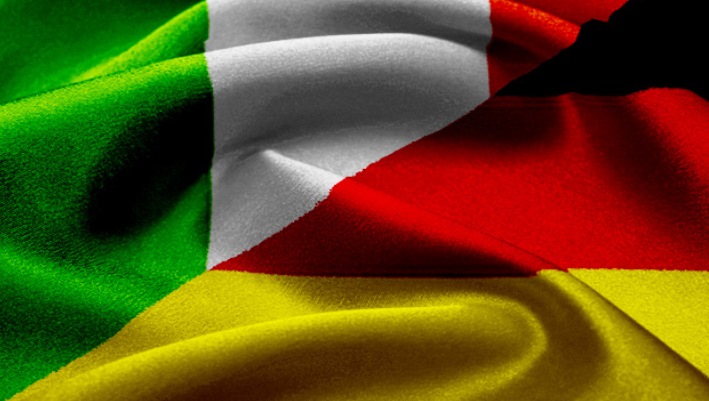What happens to the economies of China, Germany and Italy. Research Ref Report

The point on the economic situation by Ref Ricerche
The general picture just described can be outlined by looking at the trends of the various economies. In particular, the performance of industrial activity saw a disappointing phase in the South-East Asia area. A significant aspect is represented by the performance of the Chinese economy, which represented the real disappointment of the first part of 2023.
THE SITUATION IN CHINA AND UNMET EXPECTATIONS
In fact, it was expected that China, once it abandoned the "zero-Covid" policy, would restart its manufacturing base, increasing production and exports, and in turn helping to activate the production of the other economies in the area .
However, the Chinese recovery turned out to be less lively than expected, revealing how the lockdown period may have eroded part of the economy's production base; furthermore, the difficulties of the Chinese real estate sector are proving to be increasingly worrying, with therefore also effects on the activity of the construction sector and related industrial sectors. With the crisis in the real estate market, Chinese domestic demand has been deprived of one of its major driving forces, also because the weight of mortgages contracted in recent years now tends to limit the scope for growth in consumption.
THE ECONOMIES OF ASIA AND CENTRAL-EASTERN EUROPE ARE IN DIFFICULTY
In general, all the economies of the Asian area, already burdened by a phase of deterioration in monetary conditions given the increases in international interest rates, did not in turn see the expected effects of the reopening in China materialise, in a period of weakening of American and European demand. Furthermore, some countries, such as Taiwan and Korea, which in 2020-21 had benefited from the boom in demand for IT equipment induced by the lockdowns, and above all from the increase in the semiconductor market, were faced with a declining trend in demand of these products, as well as their respective prices.
Another area in difficulty is that of the countries of Central and Eastern Europe, which have suffered more directly from the consequences of the crisis in Ukraine and the increases in energy prices, and which are also feeling the effects of the difficulties of German industry. Germany in fact commands production chains to which many companies from Eastern Europe, as well as other European economies, belong.
THE CRISIS OF GERMAN INDUSTRY
The difficulties of the German production system in the last three years have partly reflected the dependence on Russian gas and the increases in energy prices. This is an aspect that various European economies have in common, but the German one (and followed by the Italian one) is characterized by a greater weight of industry on the national GDP. Specialization in the automotive sector also weighed on German industry, which was affected by problems in the supply of semiconductors.
Recent trends have partly seen an improvement in Germany's relative position, following the recovery of semiconductor supplies to the automotive sector. From the point of view of the economic cycle, the automotive recovery is therefore not linked to current trends, but is rather a consequence of orders accumulated in past quarters. Looking ahead, cars will be affected by the difficulties resulting from the increase in the cost of consumer credit. German manufacturers are also more exposed to the effects of the climate transition as more expensive cars are more exposed to loss of value linked to changes in regulations.
Among the channels that are penalizing European industry is, as already mentioned, the slowdown in construction, which is putting all the related manufacturing sectors in difficulty. From this point of view, the Italian situation is of concern, given that the boom in the construction sector could scale back next year in view of the exhaustion of the demand boosts linked to the fiscal incentives of the so-called super bonuses.
HOW ITALY IS GOING
Italy's position in the main sectoral aggregates is compared with the performance of the major euro area economies in the two tables, which show the change in production in the May-July quarter compared to the average level of 2019, before the pandemic , and the year-on-year variation.
In short, the comparison is interesting because it highlights how the return of industrial production to close to pre-pandemic levels has occurred in the major economies of the eurozone; however, the overall production trend summarizes very different situations between the sectors (which in turn show very similar sectoral patterns between the countries). The aspect to point out is that most sectors are still very far from 2019 levels, compared to relative stability in the food industry and significant increases in the electronics and pharmaceutical sectors.
The data in the second table, which instead refers to the most recent increases (the May-July quarter compared to the same period of 2022) confirm the important role of the recovery in the car and other means of transport sector, and its stability in a few other sectors (clothing and even electronics and pharmaceuticals).
Ultimately, the data show how, regardless of the aggregate results, the European productive fabric is changing substantially, following the stresses linked to the growing costs of energy and the change in the structure of final demand.
This is a machine translation from Italian language of a post published on Start Magazine at the URL https://www.startmag.it/economia/economie-cina-germania-italia-cosa-succede/ on Sat, 23 Sep 2023 05:35:25 +0000.
